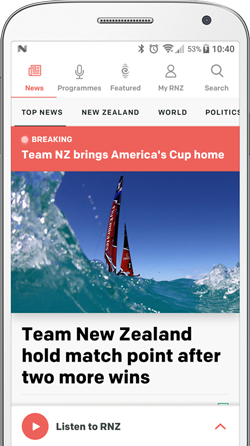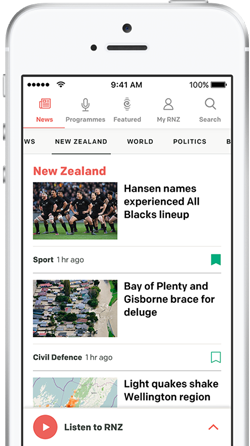
Winston Peters will today outline the type of ferries and the infrastructure plan, including port upgrade costs. Photo: RNZ
The next steps for replacing the Interislander ferries will be revealed by Winston Peters today, more than 15 months since the coalition scrapped its predecessor's iReX ferry project.
Peters was named the new Minister for Rail in December - a year to the day after the iRex deal was scuppered - promising a cheaper solution with ships to be in operation by 2029 when the current ageing fleet is set for retirement.
In Parliament last week, he said Monday's update - promised by the end of the month - would outline the type of ferries and the infrastructure plan, including port upgrade costs.
"There is a performance indicator in the freight world called a DIFOT - delivered in full on time. We're on track to deliver the goods in full and on time," Peters said.
However, it will not include details on the shipbuilder being selected by the government, and the results of the government's tender process seeking innovative ideas from the private sector. Those will be provided in two updates later in the year.
Hyundai-Mipo Dockyard (HMD) - which had the previous contract - and a Finnish firm are among the shipyards confirmed to be competing for the contract. Peters visited the South Korean HMD this year, and noted this month they were the number one shipbuilder in the world.
A key question is whether the ships will be able to carry trains which can drive into the cargo hold - referred to as "rail-enabled" - or not. Other options include road bridging - where freight is lifted off trains, loaded onto the ships, then loaded back onto trains on the other side - which the government has referred to as "rail-capable" or "rail compatible".
Only one of the three ferries in the current Interislander fleet can carry trains, and the ships set to be delivered next year under Labour's plan may not have been able to use their roll-on-roll-off rail capacity until 2027 at the earliest.
Read more:
- 'I've delivered': Willis declares victory, but details scarce
- The Detail: The risk of missing the boat
- Officials' mistrust of KiwiRail led push to scrap project
- How Labour's iReX compromise led to $100m 'cost burn'
Concerns have been raised about the efficiency of road bridging and the ability for KiwiRail to transport rail equipment between the North and South Islands. Some commentators have suggested that without at least some capacity for rail shipping, new railyards would be needed in the North Island.
What form the ships take will affect what kind of port infrastructure is required. Put simply, big ships add to the upfront construction cost, as does rail-enablement.
The port upgrades - particularly the need to update the current infrastructure in both Wellington and Picton, as well as expanding capacity to handle larger ships, adding stronger seawalls and earthquake-safe moorings and linkspans - were the main source of cost blowouts under the previous government's plan.
Finance Minister Nicola Willis indicated in December the Wellington and Picton ports would be asked to bear more of the cost burden of the upgrades.
Peters said engagements with the sector had shown there was "no shortage of good, pragmatic, sensible ideas when one is willing to listen and discuss".
"We have met unions representing Cook Strait mariners, engineers, masters, and crews. We have met on site with CentrePort to hear their views and see the infrastructure that has served our country for decades. We've met with the Mayor of Marlborough Nadine Taylor, and enjoyed hearing the priorities of her community, and her council's 100 percent commitment to practical, sensible solutions.
"The small but effective team at Ferry Holdings has met with KiwiRail, both ports' officials, councils, and many other interested parties, and they have done an extremely good job in the service of us all in this House, and in the service of our country."
The coalition remains confident its solution will end up costing less than the iReX project under Labour.
Willis has said that includes the break fee for the previous contract - the full cost of that has not yet been confirmed. The government set aside $300 million for it in a contingency fund, but final figures could be lower or higher.
In July last year, 1News reported a further $484m had already been spent on the project, including $347m on terminal design, consenting and enabling works, and other works to keep the ports usable after iReX was cancelled.
Exact cost estimates for iReX vary depending on timings and who you ask. Total project costs at the time the ship contract were signed were about $1.45b, and by the time it was cancelled that had increased to just under $3b - some of that cost borne by KiwiRail and the ports.
Since December, Willis and Peters have pointed to officials' advice warning costs could further increase, perhaps as high as $4b.
Sign up for Ngā Pitopito Kōrero, a daily newsletter curated by our editors and delivered straight to your inbox every weekday.




